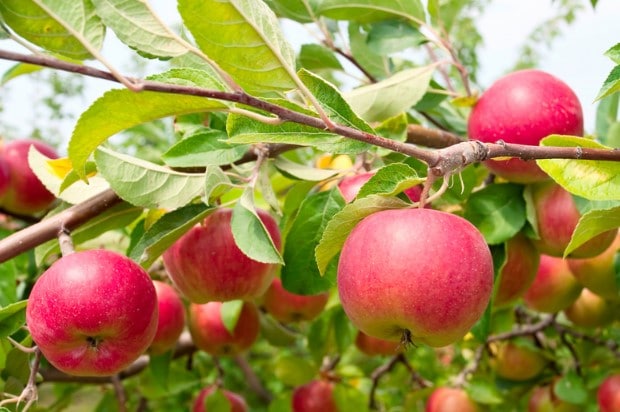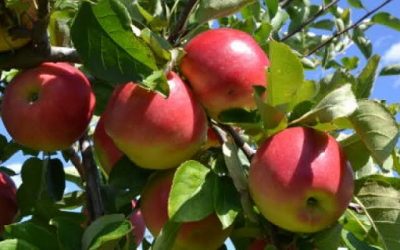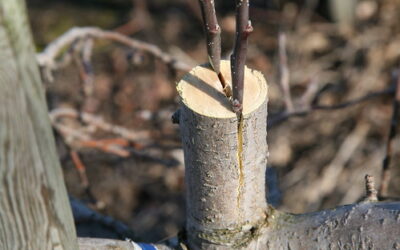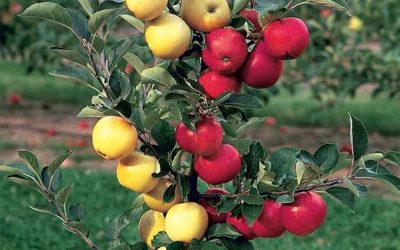How to apply fertilizers

Nitrogen and Potassium are very important for leaf growth, flowering and fruit set, while Phosphorus is crucial for the development of a strong root system especially at the early stages of plant development. Calcium, Magnesium, Manganese, Zinc and Boron are also important for various stages of bud development, flowering and fruition and any deficiency will have a negative effect in fruit number, quality and general tree health.
As a rule of thumb, mature fruit bearing trees need more fertilization than young trees that have not entered their fruition period. The average mature apple tree needs 0,6 lbs. (270g) of N per year, while the average young non-bearing fruit needs only 0,15 lbs. (68g) of N per year. These are the rates for standard height trees, so the needs of dwarf trees are normally decreased by 40%.
A common fertilization scheme used by many apple growers is adding once a year 1- 4 lbs. (0,5-2 kg) N-P-K 12-12-12 or 11-15-15 per young tree and 6,5 to 11 lbs. (3-5 kg) N-P-K 12-12-12 or 11-15-15 per mature tree. Keep in mind that 1 ton = 1000 kg = 2.200 lbs. and 1 hectare = 2,47 acres = 10.000 square meters.
Most soil fertilizers are applied from March to July. Especially if there is a Phosphorus deficiency, we may have to apply N-P-K 0-25-0 (ask a licensed agronomy). Keep in mind that the 0-25-0 fertilizer must not come in contact with the tree roots. A second commonly used fertilization scheme in an average commercial apple orchard with 600 mature trees per hectare is adding 240 lbs. (110 kg) N and 440 lbs. (200 kg) K20 per hectare, whereas Phosphorus, Magnesium and Calcium fertilizers are added according to leaf analysis.
However, these are just common patterns that should not be followed without making your own research. Every field is different and has different needs. Checking the soil nutrients and pH is vital before applying any fertilization method. Moreover, if a full coverage irrigation system is combined with the presence of Alfalfa or other legumes (as a cover crop) in a dense planting system, the need for fertilizing apple trees is remarkably reduced, because the cover crop normally produces organic matter that is decomposed, releasing important nutrients to the soil.
Contemporary apple farming practices suggest that once a year (on summer – July, August) we should collect at least 100 leaves from our apple trees and send them to laboratory for a detailed nutrient analysis. If we detect that the average leaf has some nutrient deficiencies (some important chemical elements are below acceptable standards), then we can intervene and correct the nutrient problems by adding the proper element, for instance a calcium amendment, through soil or foliar application.
The normal levels of the most important nutrient are listed below:
N: 2% – 2,4%
P: 0,1% – 0,3%
K: 1,1% and above
Ca: 1% and above
Mg: 0,25% and above


